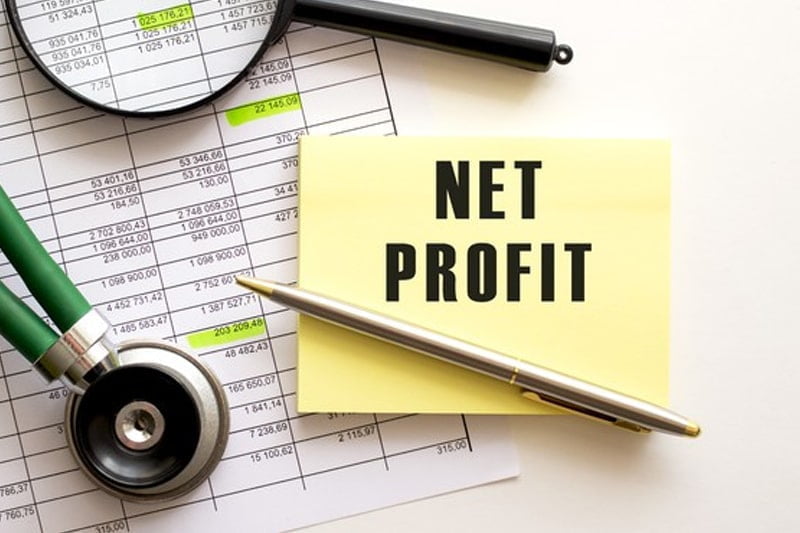The Full Process to Calculate a Return on Sales Ratio
by Abdul Aziz Mondal Sales & Marketing Published on: 06 February 2021 Last Updated on: 16 May 2025

Do you know how to calculate the return on sales ratio of your business? Whether you have a small business or large enterprise, you need to measure the ROS. It is a key performance indicator that helps you to understand the health of your business. It represents the overall profit versus the operating cost of your business.
In simple terms, a higher return on sales results in more profit. Therefore, it’s essential to track the ROS data point so that you can make crucial decisions for your business. With that in mind, you should know how to calculate ROS and its usage. Before that, let us know what exactly it means.
What is Return on Sales?

Accounting and finance are the two most important parts of any business. Usually, they are considered as one entity, but there is a difference. Accounting deals with the day-to-day cash flow within your organization. On the other hand, finance manages the broader aspects of your business that are your assets and liabilities.
In accounting and finance, return on sales is a profitability ratio that shows the proportion of profit gained from sales. It is also considered as the profit margin, but there is a small difference between them. In general, both of these can be used as interchangeable terms and also be referred to as operating margin.
Irrespective of the titles, the ratio is an essential factor that represents how effectively your business brings profit. Now, let’s know the full process to calculate the ROS ratio or profit margin.
The Process to Calculate Return on Sales

For calculating return on sales, you need to divide your operating profit by the total revenue generated from sales. To make it clear, let’s take a simple example. Assume that your business generated $600,000 in sales, and you had $400,000 expenses in the last quarter. Now, follow the below steps to calculate ROS:
- Find profit by subtracting your expenses from the revenue, i.e., $600,000-$400,000=$200,000.
- Divide the profit by the total revenue to calculate the return on sales:
ROS= Profit/Sales= $200,000/$600,000= 0.333
Usually, ROS is represented in percentage so that you can multiply the number by 100. In the above example, your return on sales is 33.33%. I hope you have learned how to calculate ROS. Now, we can write the formula for return on sales.
The Formula for Return on Sales (ROS)
For finding return on sales, subtract your expenses from the revenue, and divide the result by revenue.
Return on Sales= (Revenue-Expense)/Revenue
Next, let’s understand the significance of ROS and how it’s different from the profit margin.
Significance of Return on Sales

Return on sales is crucial because it represents the performance of a business. Investors and stakeholders look for this metric before reinvesting in the business. Moreover, it also represents the potential of the business in terms of capacity to pay back borrowings.
Also, it provides the year-to-year performance of your business. As revenue can change every year, so the expenses, only revenue does not give an accurate picture of the profitability of your company.
On the other hand, ROS gives a more precise idea of how revenue and expenses are interacting. Moreover, it’s also an excellent performance metric that can be useful to compare businesses. It will help businesses to aim for better profitability and stay competitive in their industry. Now that you have an idea of ROS let’s understand the difference between the return on sales and profit margin.
Difference Between Return on Sales and Profit Margin
We have discussed a little bit about profit margin initially, and we can use it in place of return of sales. However, it’s not exactly right because there are various types of profit margins, and only one of them is referred to as ROS.
Gross Profit Margin

Gross profit margin is the ratio of the gross profit and sales. The gross profit is the difference between total sales and the cost of total goods sold. For example, let’s say your company made total sales of $600,000 in a particular time period, and the total cost of the goods sold was $300,000. Now, gross profit is $600,000-$300,000=$300,000, and gross profit margin is $300,000/$600,000= 0.5.
It’s a benchmark that is useful for comparing different businesses. So, it’s a good way to measure how effectively a business performs with its competitors.
Net Profit Margin

Net profit margin is the proportion of the net profit by sales. The net profit of a company is the profit gained after-tax and interests. You take a similar example as mentioned above, and the only difference is here you have to subtract the taxes and interest from the gross profit and calculate the net profit.
After that, you follow the same formula, i.e., divide it by total sales to find the net profit margin. This metric helps you to know the performance of your company at different periods.
Operating Profit Margin

Operating profit margin and return on sales are interchangeable terms. We have discussed it with examples and the formula above. As a business owner, you should know these terms and how to calculate them.
If you don’t know how your business is performing, you may find it difficult to make financial and other crucial decisions. Along with that, you should also know how KPIs help you to achieve business goals.
Conclusion
Hopefully, the above information has helped you to understand the return on sales, its calculation, and usages. Now that you have known how it helps to measure your business performance, you can use it to improve your profitability. Moreover, it can also attract new investors if you have good performance. If you have any queries, please share them in the comments section below.
Read Also:



































































































